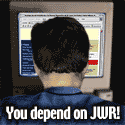
John Leo
Taking it off the streets
http://www.NewsAndOpinion.com | If you are worried about the state of free speech in America, consider the case of longtime protester Brett Bursey. Last October the 54-year-old Bursey, carrying an antiwar sign, was arrested at Columbia Metropolitan Airport in South Carolina during a visit by President Bush. He was on public property at the time but was charged with trespassing because he was outside the zone established for demonstrators that day. The zone was on the edge of a highway, a half-mile away from the president, where neither Bush nor the media were likely to notice.
The Bursey case contains other oddities. Bursey charges viewpoint discrimination--he says an airport policeman specifically told him his sign ("No war for oil") was a problem for authorities. Local charges were dropped, but Bursey faces federal charges under a rarely used statute that allows the Secret Service to restrict access to areas where the president is visiting. The U.S. attorney's office says the sign and Bursey's protest were not issues: "The problem was where he was doing it." Federal charges against out-of-place but peaceful protesters are unusual, particularly when the charges carry maximum penalties that run to six months in jail and a $5,000 fine. Perhaps when the case comes to trial, we will learn more, including why the feds bothered to file charges five months after a minor and apparently harmless act of defiance.
Serious discussion about the rights of protesters is out of fashion right now, partly because the media prefer to focus on the low-level complaints of antiwar celebrities. But there are several troubling trends, among them what seems to be a policy of more and quicker arrests, the practice of banishing protesters to faraway sites, and a tactic that JWR'sJonathan Turley, of George Washington University's law school, calls trap-and-arrest.
Pedal pushers. Turley thinks the District of Columbia police deliberately encircled large numbers of protesters for mass arrests at last September's World Bank-International Monetary Fund demonstration in Washington. The goal, he thinks, was to break the protest by removing as many people as possible from the streets without giving them any chance to leave the area. Reporters and bystanders were hauled into custody. Turley said a group of protesters on bicycles, pedaling legally through the area, were guided by police into Pershing Park, penned in there, and then arrested along with everyone else. Police in cities around the country, Turley thinks, are looking for a convenient way to control protests, and they all saw what happened in D.C.
Keeping protesters a half-mile from the action is becoming a standard tactic and not just in anti-Bush or antiwar cases. Authorities did a job on Martha Burk and her demonstration against the all-male Augusta National Golf Club during the Masters. The sheriff put Burk and her group in a muddy pit, 8 feet below street level, far from the club and well out of sight of approaching cars. Anti-Burk demonstrators were allowed closer to the gates than the pro-Burk contingent.
Colleges have adopted this technique, too. At least 20 campuses have set up "free-speech zones," effectively converting 99 percent of the campus into a giant censorship zone. The authorities usually explain that noisy protests can interfere with classes, though disallowing bullhorns during certain hours would take care of this alleged problem.
To be effective, many protests have to be site-specific. A protest against administrators needs to be mounted at the administration building, not off in some corner where officials can avoid noticing. But penning students into one or two small areas strongly appeals to administrators afflicted with an authoritarian bent. At some schools, students are now being punished for handing out leaflets in an unauthorized area. Twelve Florida State students were arrested for refusing to move their antisweatshop protest to a designated zone.
Some colleges allow free speech outside of designated zones but not if it is "potentially disruptive." This opens the door to viewpoint discrimination, always a problem on campus. At the University of Houston, a Christmas tree in a campus plaza was taken down as potentially disruptive, and a graphic antiabortion display was forbidden though prolifers complained that many other protests had been allowed in the plaza. Some campus "free-speech zones" are being eliminated, largely under pressure from the Philadelphia-based Foundation for Individual Rights in Education (FIRE).
Protecting the right to protest needn't be one of those dreaded right-vs.-left
Crossfire issues. Both sides should agree that it's OK to disagree--especially
in public.
Enjoy this writer's work? Why not sign-up for the daily JWR update. It's free. Just click here.
JWR contributor John Leo's latest book is Incorrect Thoughts: Notes on Our Wayward
Culture. Send your comments by clicking here.


